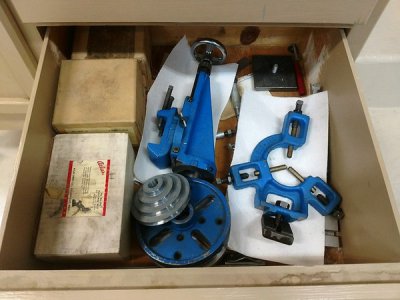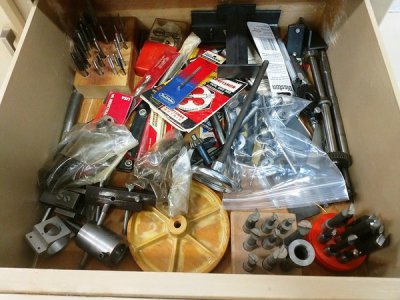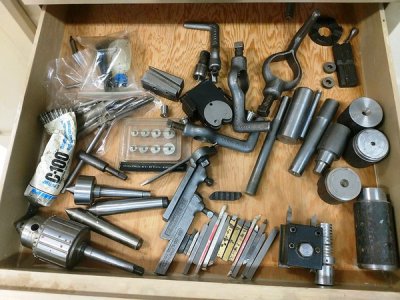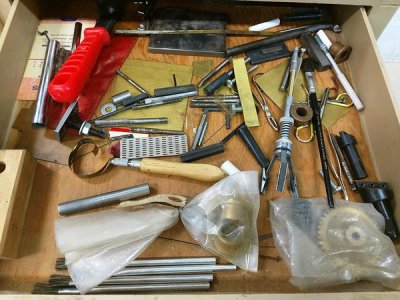- Joined
- Nov 9, 2017
- Messages
- 222
The Atlas Mk1 (which was never actually called that during its lifetime) consists of the Atlas 612 and 618, the Craftsman 101.07301, and the Craftsman 101.21400. The 618 and 101.21400 are exactly the same except for badges and nameplates, and both have 1"-10 spindle threads. The 101.07301 is almost the same as the 618 made in about 1938 to 1940 except has sleeve bearings and 1"-8 spindle threads.
The Mk2 replaced the Mk1 in about 1973. All have 1"-10 spindle threads and are 8-speed (no intermediate countershaft). The first two models were Atlas 3950 and Craftsman 101.21200. They have ball bearings on the spindle and a cast iron headstock. The first 800 to 1000 or so used the same compound and tailstock as the 618. As those were used up, they were replaced by what you have. The bed was originally the same as on the 618 except for the location of the tapped holes for the headstock and legs.
Sears discontinued the 101.21200 in 1976 or early 1977 and Atlas replaced the 3950 with the 10100 (which Sears never sold). Initially, the only difference was that the headstock (still cast iron) and spindle were modified to take Timken tapered roller bearings like the 618 had. In June 1979 at (supposedly) S/N 007328 the apron was modified to add backlash adjustment to the carriage traverse gears. At some point after S/N 008329, the traverse rack was changed from the 618 type (with 5 mounting screws and two locator pins) to only two larger screws. At some point no later than S/N 9901 and thought to probably be in early 1980, Atlas changed the headstock and legs to Zamak. This proved to be a disaster and although Atlas apparently made a retrofit kit with cast iron parts available (not clear if free or not), the 10100 went out of production probably late in 1980 or very early 1981.
Your machine has the late apron with backlash adjustment but I can't tell from the photo whether the legs and headstock are cast iron or Zamak. If you wouldn't mind, please complete the "Survey Questions For Atlas/craftsman 6" Mk2 Lathes" contained in the thread of that name up in the Sticky area at the top of this Forum.
Thanks for all the info!
The headstock and legs on this one appear to be Zamak - they are non-magnetic. Some of the documentation that came with it indicate it was bought from the factory in 1981. What's the issue with the Zamak parts, brittle, wear out easily?
Looking at the ways it's apparent this thing has little use. The tool/grinding marks are still visible front and back on both ways.
I'll do the survey for sure.





